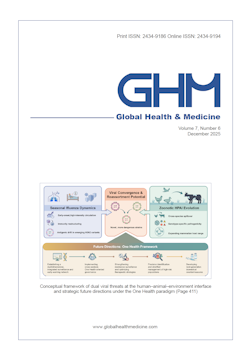Global Health & Medicine 2023;5(6):372-376.
Epidemiological trends of traveler's diarrhea in Japan: An analysis of imported infectious disease registry data from 2017–2022
Maruki T, Yamamoto K, Yamato M, Sahara T, Shirano M, Sakamoto N, Hase R, Shinohara K, Yoshimura Y, Imakita N, Kodama F, Yamamoto Y, Yokota K, Yoshimi Y, Hasegawa C, Kutsuna S, Ohmagari N
Traveler's diarrhea (TD) is a global problem, and identifying the causative organisms of TD is important for adequate treatment. Therefore, this study retrospectively analyzed TD cases in patients who returned to Japan after traveling abroad to determine the causative organisms by travel region. We included patients with a final diagnosis of TD registered in the Japan Registry for Infectious Diseases from Abroad database from September 25, 2017, to September 1, 2022, from 14 medical institutions. A total of 919 patients were analyzed; the causative TD pathogen was identified in 188 cases (20%), of which 154 were caused by diarrheagenic bacteria, the most common being Campylobacter spp. (64%). A 2.2 mg/dL C-reactive protein concentration cutoff value had some predictive ability for bacterial TD (negative predictive value, 89%). Therefore, the C-reactive protein level may help rule out bacterial diarrhea and prevent unnecessary antimicrobial administration when patients cannot provide a stool specimen.
DOI: 10.35772/ghm.2023.01079







